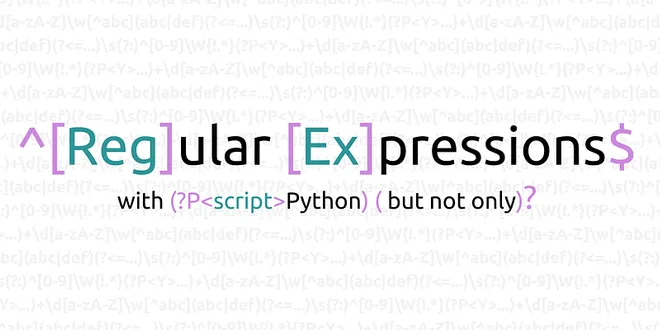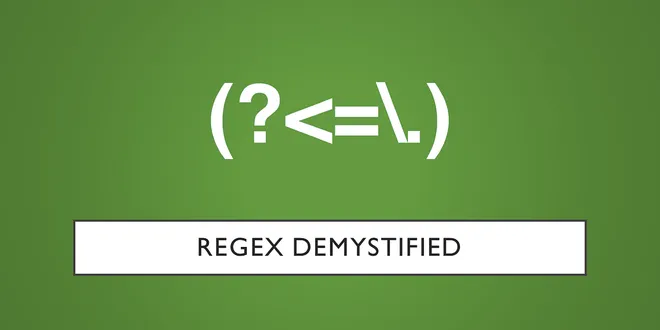regular-expression
Regular expressions, often abbreviated as regex, are powerful tools used in programming and data processing to identify and manipulate strings based on specific patterns. They consist of a sequence of characters that define a search pattern, which can be used for tasks such as searching, editing, or validating text. Regular expressions are widely supported across various programming languages, making them versatile for developers. By mastering regex syntax, users can efficiently extract, replace, or validate data, significantly speeding up tasks that would otherwise be time-consuming if done manually. Their applications range from simple text searches to complex data parsing in natural language processing.

Regular Expressions
In computer science, mathematical logic, and linguistics, a regular expression refers to a collection of techniques for the extraction and manipulation of patterns in text. Sometimes referred to as a…...
📚 Read more at Towards Data Science🔎 Find similar documents

Regular expressions in R
Regular expression is a combination of alphanumeric characters and some special characters to describe a structure common to one or more strings (examples include phone numbers, dates, and…
📚 Read more at Analytics Vidhya🔎 Find similar documents

The basics of Regular Expressions
Regular Expression is a special text string command which is used to match specific string sequences from huge chunks of data which if done manually by a person can take a lot of time. You can use…
📚 Read more at Towards Data Science🔎 Find similar documents

Introducing Regular Expressions
Introducing Regular Expressions Regular expressions are a way to describe a set of strings based on common characteristics shared by each string in the set. They can be used to search, edit, or manip...
📚 Read more at Learn Java🔎 Find similar documents

Regular Expressions
Versions [{“Name”:“Java SE 1.4”,“GroupName”:null},{“Name”:“Java SE 5”,“GroupName”:null},{“Name”:“Java SE 6”,“GroupName”:null},{“Name”:“Java SE 7”,“GroupName”:null},{“Name”:“Java SE 8”,“GroupName”:null...
📚 Read more at Essential Java🔎 Find similar documents

Regular Expressions (RegEx): Plainly Explained with Cheat Sheet to Appreciate Them
Regular expressions (or regex) are tools used to represent string patterns. They are used to detect, examine, modify, manipulate strings. Basically, if you want to find all the proper names in a…
📚 Read more at Towards Data Science🔎 Find similar documents

Exercise 31: Regular Expressions
Exercise 31: Regular Expressions A regular expression (regex) is a succinct way to encode how a sequence of characters should be matched in a string. They are normally thought of as "scary" but, as yo...
📚 Read more at Learn More Python 3 The Hard Way🔎 Find similar documents

Regular expressions in Python
Regular expressions or regex are a sequence of characters used to check whether a pattern exists in each text (string) or not, for example, to find out if “123” exists in “Practical123DataScie”. The…
📚 Read more at Towards Data Science🔎 Find similar documents

Regular Expressions with Python
Regex (Regular Expression) is simply a search query for text that is expressed by a string pattern. Running a search with a piece of text, any pattern you specify in a regex is returned as the result…...
📚 Read more at Level Up Coding🔎 Find similar documents

Regex Demystified
Regex 101 Learn the dark arts of understanding regular expressions Regex (also called Regular Expression or RegExp) is a sequence of characters that can be used to find or match patterns in text. Reg...
📚 Read more at Level Up Coding🔎 Find similar documents

Programmers Guide To Master Regular Expression
Regular Expression or (Regex) is one of the most powerful, flexible, and efficient text processing approaches. Regex has its own terminologies, conditions, and syntax; it is, in a sense, a mini…
📚 Read more at Towards Data Science🔎 Find similar documents

Regular Expressions for Beginners
Introduction A Regular expression alias a Regex is simply a sequence of characters that we can use to identify a pattern. Learning how to write a regular expression is much worth in software developme...
📚 Read more at Javarevisited🔎 Find similar documents

